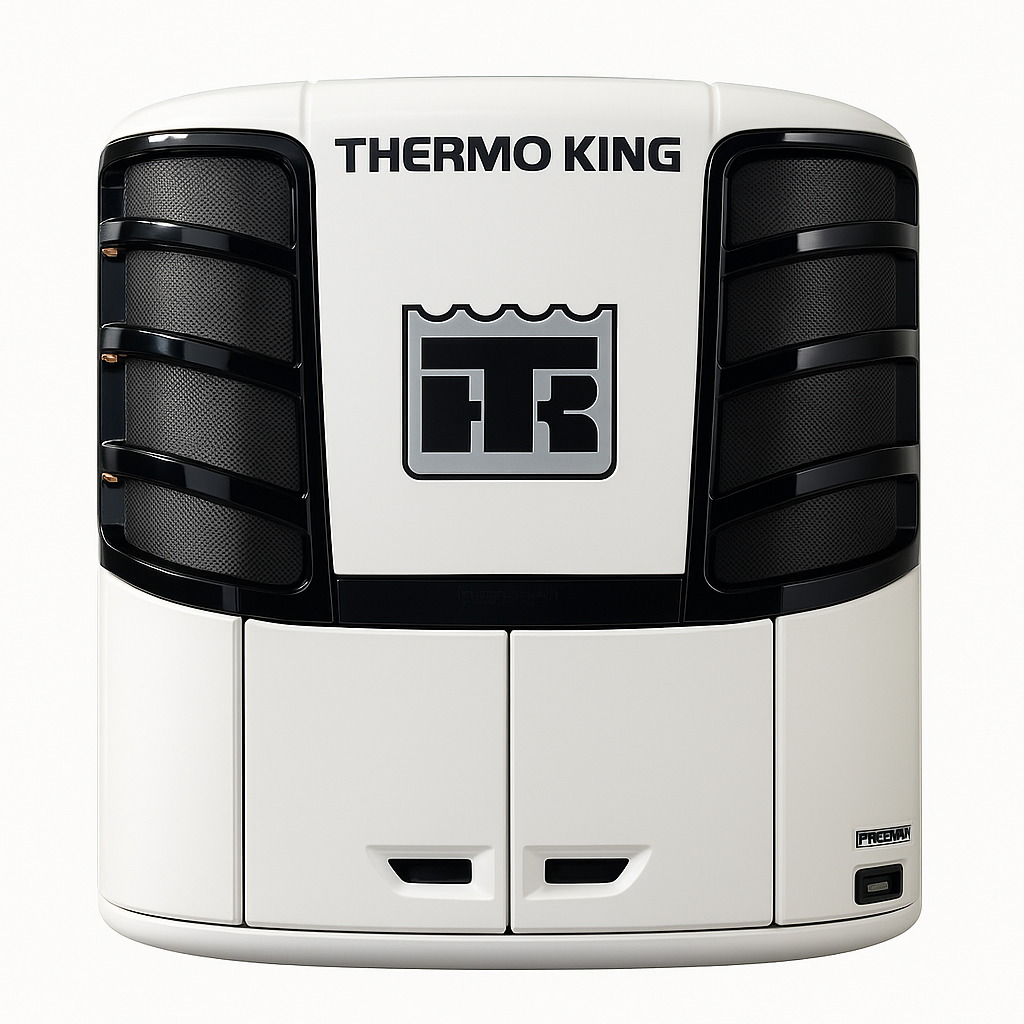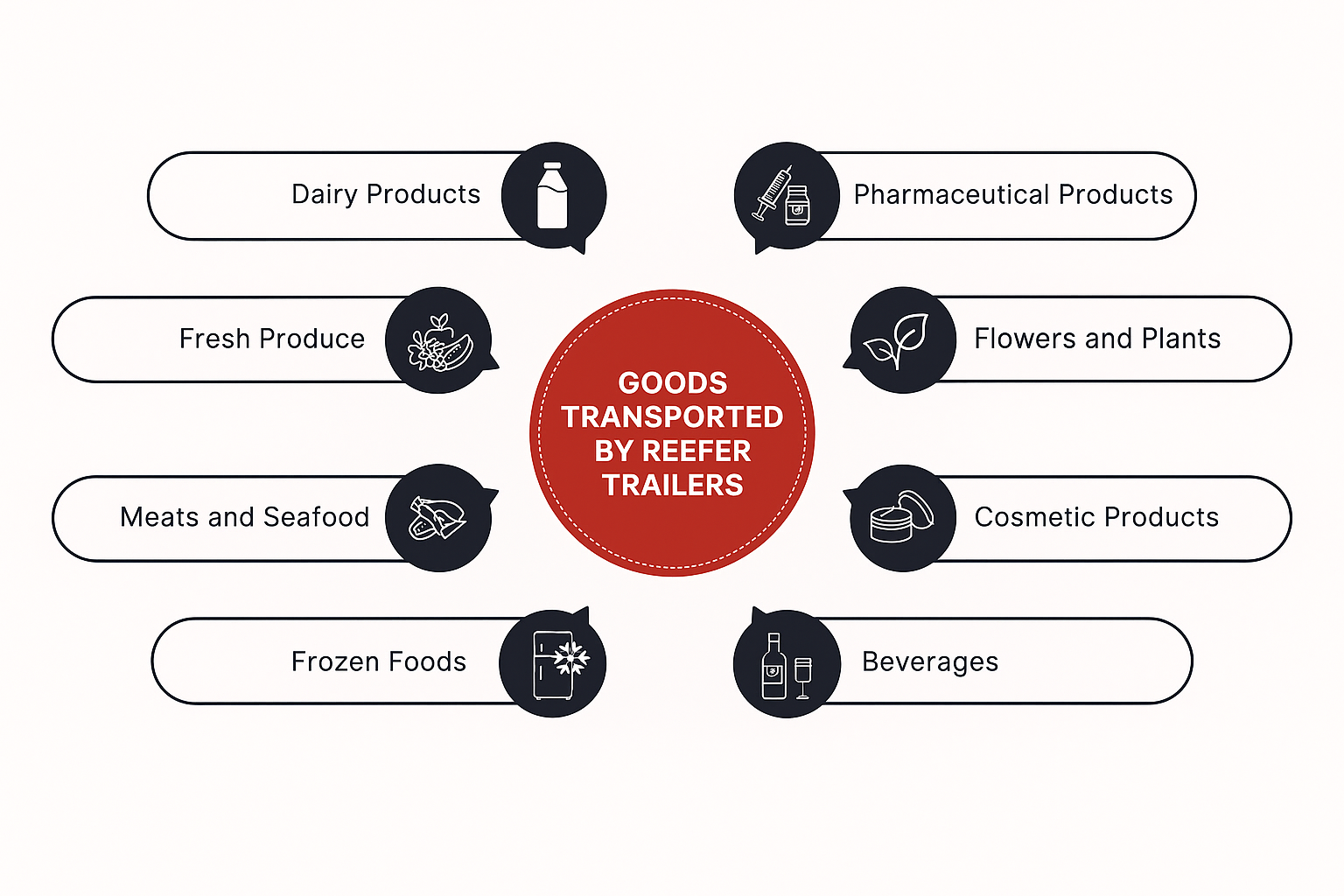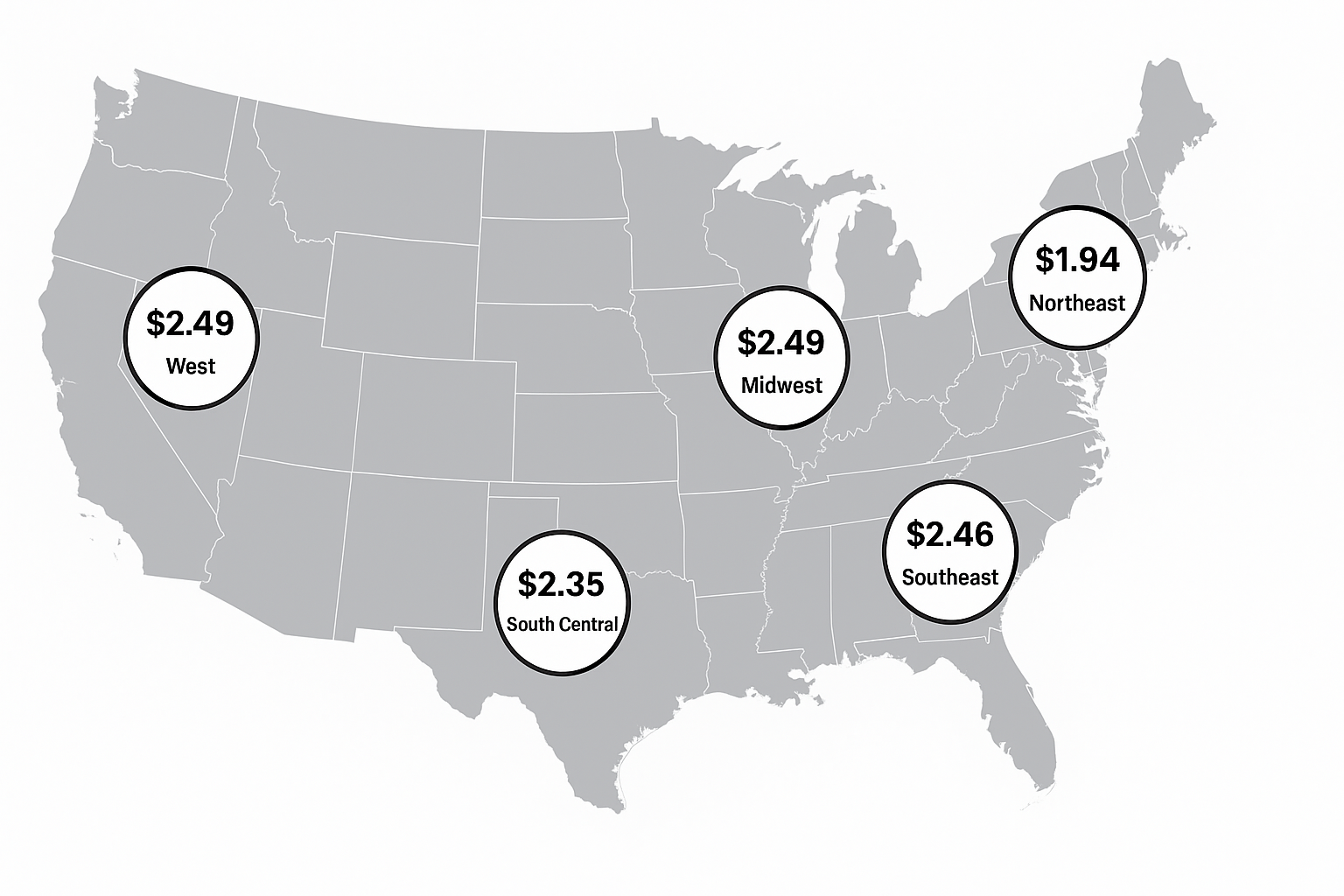What Is Reefer Freight? Key Facts for Truckers and Fleets

In the world of freight, some cargo needs more than just space. It requires the right conditions, all the way to the dock. This is where reefer trucking plays a big role.
What Is a Reefer Truck?
A reefer truck, or refrigerated truck, is a commercial vehicle equipped with a built-in refrigeration unit that keeps cargo at a specific temperature throughout the haul. These trucks are essential for transporting perishable goods such as food, pharmaceuticals, flowers, and certain chemicals.
A reefer trailer is the insulated box attached to the truck, and it can maintain temperatures ranging from below freezing to above room temperature, depending on the shipment requirements.
You May Also Like: New Trucking Rules That Already Took Effect in 2025

Understanding the Reefer Trailer
The reefer trailer, often 53 feet long, is a key component in temperature-sensitive freight. Inside, it features insulated walls, a refrigeration unit (commonly powered by diesel fuel), and airflow systems designed to maintain consistent conditions.
According to the U.S. Food and Drug Administration (FDA), maintaining proper temperature control, airflow, and insulation in refrigerated trailers is essential to ensure food safety during transportation. These requirements are part of the FDA’s Sanitary Transportation of Human and Animal Food rule, established under the Food Safety Modernization Act (FSMA), which aims to prevent food contamination and spoilage throughout the supply chain.
How Does a Reefer Trailer Work?
The reefer unit operates independently from the truck’s main engine. It uses a diesel-powered compressor and evaporator system to circulate refrigerant — typically Freon — and maintain the desired internal temperature. Depending on insulation quality, fuel capacity, and external temperatures, a reefer unit can run continuously for 48 to 72 hours before needing a refuel.
Most reefer trailers offer two primary modes of operation: continuous and start-stop. Continuous mode keeps the refrigeration unit running nonstop to maintain a consistent low temperature, making it ideal for frozen goods that require steady, uninterrupted cooling.
Start-stop mode cycles the refrigeration system on and off based on the internal temperature, which is better suited for chilled products that do not need constant freezing but must remain within a specific temperature range.
Additionally, multi-temperature reefers provide the ability to maintain different temperature zones within a single trailer. This allows carriers to transport multiple types of perishable goods simultaneously, such as frozen items in one compartment and fresh produce in another, increasing operational efficiency and flexibility.
You May Also Like: Breakdown on the Highway? Find Mobile Trailer Repair Fast

Regular maintenance is essential to keep refrigeration units running efficiently, especially during long hauls. If something goes wrong with your reefer mid-haul, your cargo could go bad. That’s why having quick access to reefer repair near me is so important. Fast access to qualified technicians can minimize downtime and prevent costly spoilage.
How Reefer Fuel Powers Refrigerated Trailers
Reefer fuel is a specialized type of diesel designed exclusively to power the refrigeration units on reefer trailers. This fuel is dyed red to differentiate it from standard highway diesel and is exempt from certain road-use taxes because it is not used to power the vehicle’s engine. This distinction helps regulatory agencies monitor fuel usage and prevent tax evasion.
Maintaining adequate reefer fuel levels is critical during transportation. If a refrigeration unit runs out of fuel mid-haul, the trailer’s temperature can rise rapidly, putting sensitive cargo at risk of spoilage or damage. This can result in significant financial losses, not to mention potential legal liabilities if perishable goods fail to meet safety standards.
Fuel consumption for reefer units varies depending on factors such as outside temperature, trailer insulation, and load type. Typically, a reefer unit consumes between 0.8 to 1.5 gallons of fuel per hour when operating continuously. Efficient fuel management involves regularly monitoring fuel gauges, scheduling timely refueling stops, and utilizing telematics systems to remotely track fuel levels.
Some fleets invest in auxiliary power units (APUs) or shore power connections at loading docks to reduce reefer fuel consumption and emissions during idle periods. Understanding reefer fuel requirements and managing consumption effectively is essential for keeping refrigerated freight safe and operations cost-efficient.
What Types of Freight Hauling Reefers?
Reefer trucking supports many industries that rely on safe temperature control. While food is a major part of this segment, refrigerated freight also includes time-sensitive and delicate products. These shipments require strict handling to maintain quality from pickup to delivery.
Reefer trucking covers a wide range of industries:
- Frozen foods and produce
- Dairy products and meats
- Flowers and plants
- Pharmaceuticals and vaccines
- Cosmetics and temperature-sensitive chemicals

Fleet Management Considerations
For fleet operators, investing in reefer trucks or refrigerated vans can expand service capabilities and attract high-value clients. Managing a reefer fleet includes more frequent equipment checks, preventive maintenance for refrigeration units, and detailed scheduling to reduce downtime between temperature-sensitive loads.
Many refrigerated trucking companies use telematics to track fuel consumption, monitor trailer temperatures in real time, and receive maintenance alerts. These systems improve fleet performance and help maintain strict customer and regulatory standards.
According to the American Trucking Associations (ATA), demand for refrigerated transportation continues to rise due to growth in grocery delivery, pharmaceutical logistics, and seasonal food distribution.
How Much Does a Reefer Trailer Cost?
A new 53-foot reefer trailer typically ranges from $60,000 to $120,000, depending on manufacturer, build quality, and refrigeration unit type. Used reefer trailers can be more affordable, but they should be inspected closely for unit hours, insulation condition, and interior wear, especially the floor panels and seals.
An empty reefer trailer usually weighs between 12,000 and 15,000 pounds, which is heavier than most dry vans. This weight affects payload capacity and fuel efficiency, both of which should be considered when pricing loads.
Choosing Between Reefer, Dry Van, or Flatbed
Selecting the right trailer type depends largely on the nature of the freight, the carrier’s operating budget, and long-term business objectives.
Reefer trucking is ideal for carriers who want to specialize in transporting temperature-sensitive goods year-round. While the upfront investment and operational costs are higher, reefer hauling offers access to higher-paying loads and growing markets such as pharmaceuticals, fresh produce, and frozen foods. These operations require strict temperature monitoring, regular maintenance of refrigeration units, and compliance with food safety regulations.
Recent data underscores the financial potential of this specialization. According to the DAT Trendlines report from July 15, 2025, reefer spot rates averaged $2.44 per mile, marking a $0.07 increase from the previous month. The Midwest and West led in pricing, with average rates of $2.49 per mile, while the Northeast remained the lowest at $1.94 per mile. This regional demand further highlights how carriers can leverage reefer equipment to align with higher-paying markets and customer needs.
You May Also Like: How Much Do Truck Drivers Earn in Different States?

Dry vans are the most common and versatile trailers in freight transportation. They provide a fully enclosed, weatherproof space suitable for a wide range of non-perishable goods, including packaged products, electronics, and retail items. Dry vans generally require lower maintenance than reefers, do not consume additional fuel for refrigeration, and are simpler to operate and dispatch. This makes them a preferred choice for carriers seeking flexibility and lower overhead costs.
Flatbed trailers are designed to haul oversized, irregular, or heavy freight that does not fit inside enclosed trailers. This includes construction materials, machinery, steel coils, and large equipment. Operating flatbeds requires specialized securement knowledge to ensure cargo is safely tied down according to Department of Transportation regulations. While flatbed trucking may involve more hands-on loading and unloading, it can open doors to niche markets with less competition.
Each trailer type has its advantages and challenges. Reefer operations demand close attention to timing, temperature control, and trailer condition, but can yield substantial financial rewards for fleets and owner-operators equipped to manage these factors. Dry vans offer broad applicability and lower complexity, while flatbeds serve specialized freight needs requiring careful handling. Understanding these differences is crucial for making informed investment and operational decisions.
Is Reefer Trucking Right for You?
That depends on what you're looking for. If you're aiming for consistent freight and are willing to meet higher equipment and handling standards, reefer trucking can be a smart move. It requires attention to detail, regulatory compliance, and upfront investment, but in return, it offers steady demand across essential sectors like food and healthcare.
Knowing how a reefer truck works, what it carries, and how it compares to dry vans or flatbeds helps drivers and fleet managers make informed decisions. Whether you're exploring reefer loads for owner-operators or managing a multi-unit refrigerated fleet, the right preparation and knowledge make all the difference.












